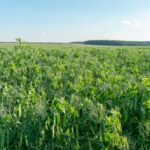Wheat farming is a significant agricultural activity in South Africa, contributing to the nation’s food security and economy. However, achieving high yields requires meticulous planning and execution. Many farmers unknowingly make mistakes that reduce productivity and profitability. Here are ten common mistakes in wheat farming and practical solutions to avoid them.
Choosing the Wrong Variety
Planting a wheat variety unsuitable for your region can lead to poor yields, increased susceptibility to diseases, and lower quality grain. Factors such as climate, soil type, and resistance to local pests and diseases must guide variety selection. Farmers should consult local extension services or seed suppliers to select region-specific, high-yield, and disease-resistant varieties.
Neglecting Soil Testing
Soil health directly impacts crop performance, and failing to test soil can result in nutrient imbalances. Many farmers apply fertilizers without understanding the specific needs of their soil, leading to wastage or deficiencies. Conducting soil tests before planting provides valuable information on pH levels and nutrient content, allowing for targeted fertilizer application and lime use to optimize soil health.
Planting at the Wrong Time
Timing is crucial for wheat farming. Planting too early can expose crops to frost, while late planting may lead to poor grain filling due to excessive heat. In South Africa, winter wheat should be planted from May to July, depending on regional climatic conditions. Farmers should monitor weather forecasts and follow local planting schedules for optimal results.
Poor Seedbed Preparation
A poorly prepared seedbed results in uneven germination and reduced root establishment. Cloddy or compacted soil impedes seed-to-soil contact and water infiltration. To prepare a proper seedbed, farmers should plow and level the field using modern equipment like harrows and rotavators, ensuring uniformity and aeration.
Incorrect Seeding Rate
Using an incorrect seeding rate can affect crop density and yield. Over-seeding causes competition among plants, while under-seeding leaves room for weeds to thrive. Farmers should use calibrated planting equipment to achieve the recommended rate of about 180-220 plants per square meter, adjusted for the specific variety and soil conditions.
Inadequate Weed Management
Weeds compete with wheat for sunlight, water, and nutrients, leading to lower yields. Many farmers either delay weed control or rely solely on herbicides, which can lead to resistance. Implementing an integrated weed management approach, including crop rotation, pre-emergent herbicides, and timely manual or mechanical weeding, ensures effective control.
Improper Fertilizer Application
Misusing fertilizers, such as applying them in excess or too late, can harm wheat crops and the environment. Farmers should base fertilizer application on soil test results to provide balanced nutrients. Splitting applications—once at planting and again during critical growth stages—ensures the crop receives nutrients when needed most.
Failure to Manage Pests and Diseases
Pests like aphids and diseases such as leaf rust and stem rust are common threats to wheat farming. Ignoring early signs of infestation can lead to severe damage. Farmers should scout fields regularly and implement integrated pest and disease management strategies, including using resistant varieties, crop rotation, and timely application of pesticides and fungicides.
Inadequate Water Management
Both over-irrigation and under-irrigation can affect wheat growth. Waterlogging damages roots, while water stress during critical stages like flowering and grain filling reduces yields. Farmers should adopt efficient irrigation methods like drip or sprinkler systems and monitor soil moisture levels to provide adequate water without wastage.
Poor Harvest Timing
Harvesting wheat too early or too late leads to grain quality and quantity losses. Early harvesting results in immature grains, while delayed harvesting increases the risk of shattering and pest damage. Farmers should harvest wheat when the grains are fully mature, hard, and have a moisture content of 12-14%. Using modern combine harvesters ensures efficient and timely harvesting.
By avoiding these common mistakes and adopting best practices, South African farmers can improve their wheat yields and profitability. Continuous education, investment in modern equipment, and collaboration with agricultural experts are key to success in wheat farming.
Join 'Farmers Mag' WhatsApp Channel
Get the latest Farming news and tips delivered straight to your WhatsApp
CLICK HERE TO JOIN






